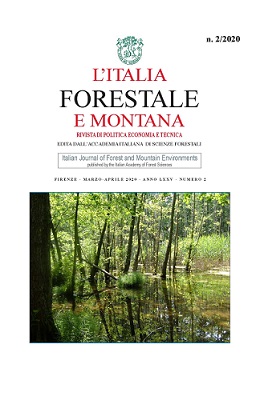Published 2020-04-30
Keywords
- Complex Adaptive System,
- resilience,
- forest biocomplexity,
- natural forest evolution,
- space and time
Copyright (c) 2020 Italian Journal of Forest and Mountain Environments

This work is licensed under a Creative Commons Attribution-NonCommercial 4.0 International License.
Abstract
Forests are now universally thought of as Complex Adaptive Systems.
The adaptive capacity of these ecosystems is directly proportional to their resistance, resilience and adaptability/plasticity. These attributes are, in turn, a function of the degree of biocomplexity (compositional, structural and functional/relational) obtained by the system itself.
Because a forest can reach a high level of complexity, an adequate three-dimensional physical space and a very long time span must be ensured.
Managed forests are often limited in surface (due to physical or ecological fragmentation) and in height (due to too early and intense cuts, which does not allow the canopy to occupy all the available biospace) making them more simplified and therefore less resilient.
As regards time, the diversity between human time and forest time is not often taken into account, attempting to accelerate, in an unnatural way, the growth and succession of the structural phases. Speed is the enemy of complexity, especially relational complexity, on which the ability of forests to respond to external disturbances is based.
Global change and the new challenges for the planet’s future require a decisive change in the criteria and methods of forest management, also considering the great value of ecosystems left to undisturbed natural evolution.

